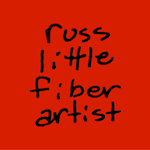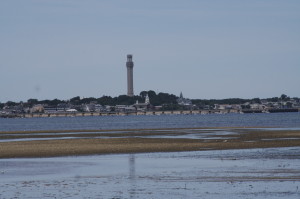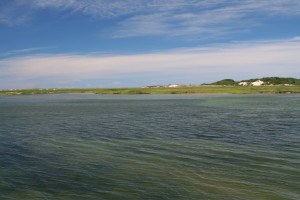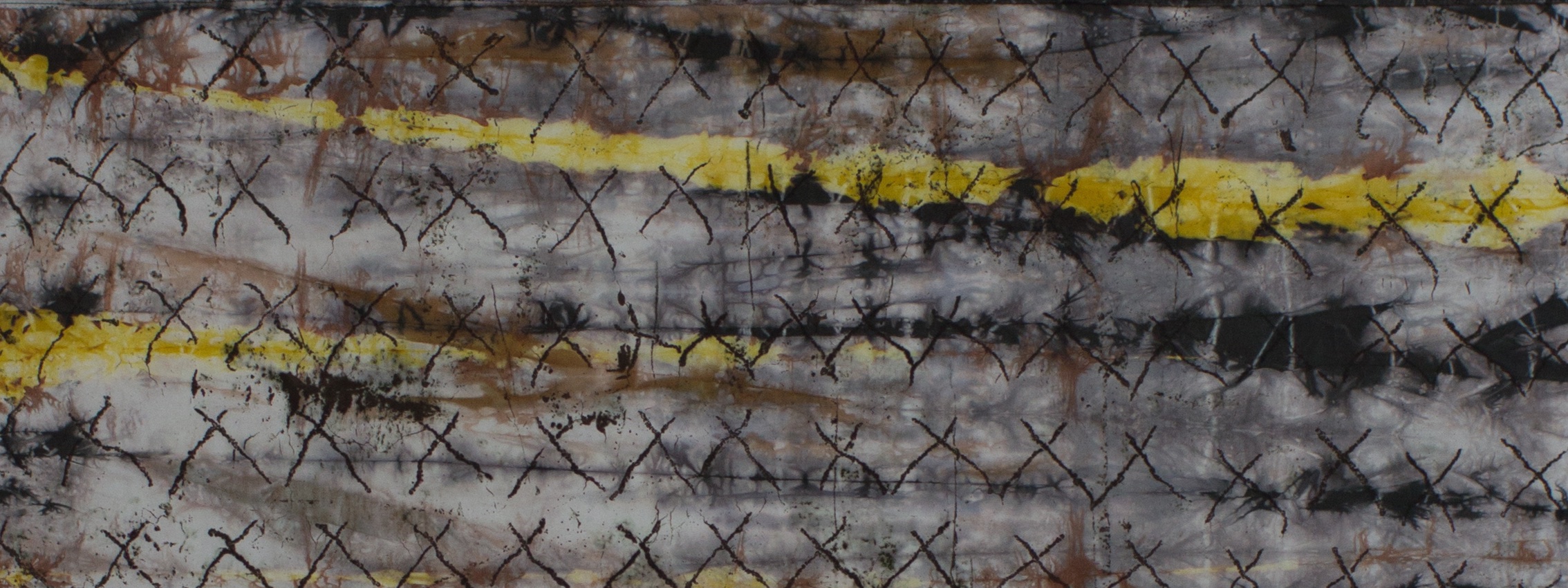
Thoughts & news
And now for something a little different…
I generally reserve my website for things related to my artwork or the workings of my studio. I’m posting this essay here partly because I need a place to park it besides Facebook, and partly because it touches on the core of who I am and is thus related to the art I make. If this topic isn’t of interest to you please feel free skip this posting and know that I will continue posting occasional updates about art here and on my studio Facebook page and Instagram feeds.
And then I asked them to pray!
Russ Little, 16 June 2020
Over the past two weeks I’ve called on a wide circle of family, friends, colleagues, and acquaintances to pray for my husband, Dan, who is in a trauma ICU fighting to recover from a near-fatal car crash.
I asked people to pray, and that’s made me think a lot about what exactly that means. What is prayer? What does it mean for me to make such a request? What is my own prayer life like? Is it hypocritical to ask for something that I’m not even sure that I do all that well? Part of the way that I’ve been working my way through these thoughts is by writing this short statement—writing it and rewriting it.
I’m not especially interested in proselytizing, evangelizing, or any other “izing.” I think that faith is a very personal choice and I believe that it’s arguably a faithless act to assume that only one tradition or belief system is right, and thus all others are inherently wrong or evil. So, you do you. As long as that means that you’re kind to others, strive to practice diversity, equality, respect, and love, and you’re grateful for the good things in your life, then I think we’re both headed in the same direction.
And yet, I asked people to pray. What if the concept of “prayer” is foreign, off putting, or downright antithetical to your own beliefs? Am I adding to the grief and confusion folks are already feeling about this terrible accident by throwing prayer into the mix? I think the answers lie in a shared understanding of what prayer means to me. If I take this moment to say a little more about my own understanding of this particularly loaded word, “prayer,” then… We’ll, I don’t know. Maybe we’ll all be more comfortable.
I’m not going to regurgitate what I’ve been taught about prayer. This is what I personally believe—prayer according to Russ. I use prayer as an umbrella term to encompass the many forms of mindful contemplation, by which I mean gently holding a thought with an open mind, an open heart, and a willingness to welcome new feelings, insight, or healing. My thoughts about formal intercessory prayer (asking for a specific thing on behalf of another) are complicated. I’m not comfortable with the notion of a quid pro quo relationship with the universe—“If I say X or promise Y, then Z will happen”. But, I do pray for others. I think prayer does two things, one tangible and one intangible. First, I think that prayer—mindfulness, presence, contemplation, and openness—can be a source of personal growth and healing. It can make your own life better, and a healthy, grounded you means an incrementally healthier world. Second—and this is the harder part to embrace—I believe that the same prayer that expands your own heart and mind has the potential to reach others, either through a change brought about in you or through some intangible and inexplicable metaphysical shift.
So, when I ask you to pray for Dan, me, and our family, what I’m asking is for you to bring us into your mind in those quiet moments and hold us in love. My hope is that this will bring you peace and hope and that some of that will spill over to Dan himself.
As to the mechanics of prayer, they don’t need to involve mats, altars, incense, icons, beads, or other appliances unless those things help you. The two best prayer times for me are while walking and when I’m in the studio. I’m a working studio artist. When I’m painting, drawing, or stitching it’s helpful for me to disengage as much of my conscious mind as possible as a way of opening up creative flow. A quieter mind also allows me to hold a concern or another person in my heart while I work. Walking does a similar thing. Getting out of the house and putting one foot in front of the other creates a similar kind of open inner space. I also use prayer beads, not a rosary but sort of. Working my fingers slowly along a circle of beads as I walk helps me to hold focus on a specific thing—or gently return to that focus when I drift. It’s a balancing act between focusing and not focusing so much that you close your mind to all else. It’s also worth noting that keeping the beads in your pocket while you walk might be discrete but it also looks a little...um...suspicious.
If you’ve read this far then you have my thanks. I hope that by sharing these thoughts I’ve created a place of common ground between us. Prayer need not be the elephant in the room. Feel free to call it by another name that’s better aligned with your own beliefs. I hope that some form of prayerful engagement will bring you peace, improve our world, and bring healing and grace to those you love.
With love,
Russ
Yearend perspective
"Nuclear Family," exhibited at the Schweinfurth Art Center in the summer of 2016.
Forget the super moon. The big thing now looming large on the horizon is the end of 2016, a year that will, for a host of reasons, be remembered, analyzed, and discussed ad nauseam for years to come.
From a more personal perspective, this year has been one of significant change: leaving a job I loved (not entirely by choice), working independently in a new field, and learning a bit more about the kind of work that I like doing.
Here are a few things I've learned with year:
- At the very top of the list: Be careful what you wish for. I've long said that I'd love to try working as a full-time artist. This year I've had the great good fortune to have been given just that opportunity, but it's sort of like the universe called my bluff.
- Working alone, even for an introvert, can get lonely. It's really important to build social and professional connections and to interact with people. I miss the daily collegial conversations that naturally come as part of a corporate job. I know that this is something that I need to attend to in the coming year.
- I miss the leading, teaching, and helping aspects of my former career. I expect that most any artist would say that there's a delicate balance between working studio time, quiet thinking time, and other pursuits. I'm looking for ways to scratch the itch for teaching and leading, but still guard that precious studio time.
- I'm still trying to figure it out what it means to be a “working artist.” In western culture in particular, work equates to a JOB (i.e., nothing that could ever be misconstrued as a hobby), progressive responsibility, earned income, financial independence, etc. Very few artists produce artwork that fits this description. Fame and fortune are not the objectives, and if they come at all, it's only after years of hard work—or after you're dead. This year I've been fortunate to have had my income supplemented by severance pay from my last job. That being said, I also sold enough work to be in the black for the year, but you can hardly call my net earning a living wage. I have artist friends who make money by teaching, publishing books, and doing TV appearances. Although I'm interested in teaching, I don't see myself becoming a traveling teacher or doing super-sized craft shows all over the country. Now I've got to figure out where that leaves me. I also know that, lofty as it might sound, one of my top priorities has to be growing as an artist and producing the best work of which I'm capable. Again, I have the great good fortune that Dan and I have arranged our finances in a way that allows me to continue on this journey next year.
- Finally, although it should be obvious, I've had to remind myself more times than I can count that changing careers is starting over—going back to the bottom and working your way up again. You don't get to step out of a mid-career, peak earning job into a similar situation in a completely different field with a different pay structure and expect all things to remain the same. Again, obvious. Knew it before I started. Still need to remind myself not to compare apples and oranges.
Now, I have to say that writing those five bullet points has put me in a bit of funk. What am I doing? Is this all a mistake? But I know that this just another aspect of being your own boss. I don't have a boss to give me a good yearend review, and no teammates to offer positive feedback. Depending on your personality, when you work alone, it can be easy to lose sight of your accomplishments when you're focused on big questions and the future. So, for the record, I am proud of what I've accomplished this year--more sales, more commissions, more inventory, and more artwork being exhibited out in the world. I aimed high and applied for some very selective art competitions and craft shows, but didn't get accepted to most. Hey, aim high, fall far, get up and try again. To be honest, not getting into a huge, 4-day, very expensive craft show is not the worst thing that could happen!
So, here's my closing thought: 2016 has been a real adventure, full of learning and growth, and I can't recall ever uttering the words, “I'm bored.” I'm looking forward to more of the same in 2017. And to all of you who congratulated me on my “early retirement,” please know that I appreciate the good wishes, but I'll be continuing in my not-so-secret identity as the Owner and Principal Artist at russlittlefiberartist, LLC for the foreseeable future. I'll figure out the retirement thing when I get there.
Lessons from my 365: Not every design is a winner
Well, doesn't this seem like a good place to start as I consider what lessons I might learn or re-learn from my recently completed "365 Patterns" project? Just because I put pen to paper, brush to canvas, or press the shutter release button on a camera doesn't mean the result is going to be a great work. Consider the following two images. I probably spent about the same amount of time on each, but the one on the left clearly has color issues and just isn't anything too special. The on the right is better: more depth, better positive/negative space relationships, and just generally more engaging.
So, what's to be learned from this confession? I think it's these thoughts:
- Do prepare to work by taking a few minutes to clear your mind and settle your body. This is my single biggest challenge.
- Do practice, and in doing so, sometimes work rapidly.
- Do balance rapid work with slower and more contemplative work.
- Don't become overly invested in the result before the process has even begun. "I will now create a successful work of art?" is a burdensome point of beginning at best, and more often than not the first step on the road to disaster.
- Don't loose sight of the fact that at some point there's greater value in working--regardless of the outcome--than in merely contemplating the work. Spend time with your thoughts, then get out of your head and do something.
- Do value the learning that comes from making mistakes and doing work that turns out to be less than expected.
Fallow time
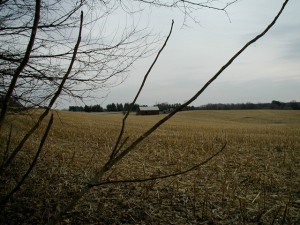 The last few months have been a bit of a dry time for me in the studio. A mixture of happy and not-so-happy life events have combined to create an emotional roller coaster that’s left me feeling rather overwhelmed and unproductive. On the positive side, Dan and I got legally married and escaped to the Caribbean for a week of warmth with friends. That happiness stood in sharp juxtaposition to other events, such as the death of a friend, work stress, and the seasonal malaise that seems to be epidemic this winter. Given my temperament, unproductive and overwhelmed live just around the corner from guilt, obsession, and worry. Not pretty, but I’m working on that.
Like most everyone this year, I’m eagerly awaiting the permanent arrival of spring—not this 70’s-one-day-and-snow-the-next stuff. Spring is about renewal and rebirth, and yet I’m trying to look at this not-so-great studio time as fallow time. Good stewardship of the land requires that a field not be planted every season or always with the same crop. Periodically, cropland needs to be allowed to regenerate, often through planting with a fallow crop that promotes soil enrichment. We too need time to regenerate. I feel that I’ve harvested a lot of good things from the my field—my studio—over the past few years, and yet it's so easy to fall prey to the expectation of continuous growth and continuous harvest.
The last few months have been a bit of a dry time for me in the studio. A mixture of happy and not-so-happy life events have combined to create an emotional roller coaster that’s left me feeling rather overwhelmed and unproductive. On the positive side, Dan and I got legally married and escaped to the Caribbean for a week of warmth with friends. That happiness stood in sharp juxtaposition to other events, such as the death of a friend, work stress, and the seasonal malaise that seems to be epidemic this winter. Given my temperament, unproductive and overwhelmed live just around the corner from guilt, obsession, and worry. Not pretty, but I’m working on that.
Like most everyone this year, I’m eagerly awaiting the permanent arrival of spring—not this 70’s-one-day-and-snow-the-next stuff. Spring is about renewal and rebirth, and yet I’m trying to look at this not-so-great studio time as fallow time. Good stewardship of the land requires that a field not be planted every season or always with the same crop. Periodically, cropland needs to be allowed to regenerate, often through planting with a fallow crop that promotes soil enrichment. We too need time to regenerate. I feel that I’ve harvested a lot of good things from the my field—my studio—over the past few years, and yet it's so easy to fall prey to the expectation of continuous growth and continuous harvest.
So for now, I’ve got a commission piece is process, and I’m experimenting with ideas for a new series—and, I’m trying to be patient with myself. That’s easier said than done, but I’m trying.
It was the best of strip piecing; it was the worst of strip piecing
Now I AM trying to be coy with that title, but it has been a most unusual and unexpected week. In fact it's been one of the more disturbing weeks in recent memory; not quite in the same class as my surgery week, but up there with some of the recovery weeks. I'm physically fine, though still trying to shake the last vestiges of the creeping crud that seems to be pandemic at this point. Mentally--I've got a little healing to do in the next 2 days. So, let me start by saying that Nancy Crow is wonderful, committed, nurturing, and keenly observant of each of her students' needs, capabilities, and struggles; and she pushes each person to do his or her best in her classes. Given a chance, I will likely take another class from her. But...I won't be taking the class that I was signed up to take starting on Monday, "Strip piecing and restructuring."
Something bad happened this week and I'm having trouble putting my finger on just what it was or exactly what caused it. The best description that I can give is that while I'm certainly at a point in my development as an artist where work on composition is needed, strip piecing does not seem to be a good vehicle for doing so. The first day and the first composition went well. I even enjoyed working in black and white; I might even do more of that on my own. We began the second composition (4 x 6 feet) Thursday afternoon with a deadline of 4 PM Friday. The assignment was to create a strip quilt composition using the strip-pieced fabrics that we had created Tues-Thurs AM. We were to make substantial use of restructuring in the composition, not just string together strips of strip-pieced fabric. I was totally and utterly blocked. I HAVE DONE THIS MANY TIMES BEFORE. Why was it so hard in this class? Anyone who knows me will be horrified and just as mystified as I am to hear that I did not finish my composition and that, while it had interesting elements, it was in my opinion worthy of being ripped off the wall.
This happens to everyone involved in any creative pursuit. There are times when you need to rip the page out of the typewriter, paint over the canvas, or rip the quilt off the design wall. That said, a workshop is a free and open time to be wild and take risk. Somehow I just shut down. In a nutshell I was the seed that failed to germinate. WTF!
Nancy saw this and felt the--what were her words, "radiating anxiety"? So now I feel like a bit of a failure, but I'm processing it. Here are my takeaways so far:
- I learned some valuable things about figure/ground relationships, value, and proportion this week.
- I learned that I can sew a lot in 65 hours and that if I focus and avoid procrastination I can produce more work that I am currently producing.
- I'm going to rework my studio space to have a larger design wall, a different work/cutting table, and less display space.
- I'm not going to be throwing out my ruler any time soon, but I'm going to do much more freehand cutting and change some of my other construction techniques.
Perhaps the biggest takeaway (and I'm trying not to use this as an excuse) is that I think part of the problem this week was that I am (a) rather more willful than I care to admit, and (b) more committed than I realized to the layered manner in which I'm currently working and the motifs on which I've been focused. Stitching strips and dealing with lines and rectilinear shapes is the antithesis of the circles and curves to which I'm currently drawn.
Yesterday I had alternating conversations with Nancy and Carol Soderlund, who's been teaching a dye class in the wet studio this week and with whom I've taken two classes. Next week Carol is teaching a new class called "Layers upon layers," which is pretty much exactly the way that I work. That's where I belong right now. I wrestled for quite a while with the concern that I might be running toward what is familiar and easy. I don't think that's the case and I've asked Carol to offer hard criticism and challenge me. I'm sure I'll add a few new techniques to my bag of tricks, but my goal is to focus on this circular motif and ways that I can use and restructure it in more sophisticated compositions. Nancy graciously offered me the option of doing a independent study with her upstairs, but as much as I intend to do stitched composition next week, I also need access to the wet studio printing/painting/dying resources.
I still feel a bit like a Nancy Crow drop out, but perhaps it's more that I changed majors. I hope to get the train back on the tracks next week. Wish me luck.
Homework for Kerr, part 2
Read my last post before you read this one. It will save me the trouble of explaining what this "homework" thing is all about. The second part of the assignment is to prepare a written critical assessment of my work--not so much a critique, but an analysis of recurring theme, colors, techniques, etc. So, here goes. A critical look of my work
Color
- orange
- green
- blue
- brown
- tan
- black
- love purple, but I've avoided it because I've had trouble mixing it successfully (that's getting better since Carol's class)
Technique
- Mostly working with thickened dye
- Direct application with foam brush
- Doing a lot more painting than I expected. Maybe I'm part painter?
- Screened dye--often printing with the full area of the screen, with or without paper or wax masking on the screen. I like the hard square edges.
- Extruded dye to create messy lines. The syringe is a little hard to control and forces me to work fast, which is good.
- Layered application of dye (some technical problems here that need to be worked out)
- Discharge paste screened on with a mask to remove background dye (love to do this with leaves)
- Drawing with discharge paste in an syringe or a squeeze bottle
Form, shape, and pattern
- Almost nothing figurative or textual
- Lines and grids
- Round and square spirals
- Circles--regular and irregular
- Leaves
- Dots
- Splatters
- Question: what are my cultural motifs?
Texture, rhythm, descriptive words
- Happy
- Layered
- Depth
- Rough
- Messy
Scale
- Patterns tend to be 10" X 10" or smaller
- Overall composition size tends to be about 24-36" wide X 45" tall
- It's time to do a full width 2-yard piece
- Maybe I need a BIG screen
Fiber
- Cotton--some Kona, but lately Test 400M Print Cloth
- Silk--Habotai is my favorite
- Rayon--takes dye really well and great for whole cloth quilting
Embellishment and quilting
- Running stitch to outline specific shapes or add detail
- Fabric paint--outlining shapes with dots
- Fabric markers to add detail or outline
- Reverse applique
- Machine embroidery
- Yarn appliqued by machine--free motion or with an embroidery machine
- Quilting tends to be dense--stipple, lines, or grids, almost all free motion (I don't do feathers!)
- Starting to do some echo quilting
Homework for Kerr's workshop
I'm leaving one week from tomorrow for Ohio to spend a week at the Nancy Crow Timber Frame Barn studying with Kerr Grabowski. I've been looking forward to this workshop since I made my last drive down Thunder Mountain Road in a billowing cloud of dust. That vivid scene was on the last day of the workshop that I took with Kerr and Rayna Gillman last summer at Peter's Valley. Come to think of it, I started this blog just a couple of days later, after reading Rayna's blog and being inspired to give it a try. I'm a little conflicted (but only a very little) about taking a second workshop from the same person. There are some really great teachers out there. Shouldn't I be looking for breadth instead of depth? I guess I'm more of a depth kind of guy when you get right down to it. Anyway, I don't expect this workshop to be a repetition of last summer. I'm going with the expectation of refining an developing some of my skills, getting answers to some of my "what am I doing wrong here" questions, making great cloth, meeting interesting people, and working in the Barn. It's going to be great. I'm already wishing that it was a 2-week workshop, but my boss would have a fit so it's just as well that it's one week.
So, Kerr sent an e-mail yesterday to the whole class giving us a homework assignment. Can you imagine?! Like I don't have enough to d0? : )
First we need to bring "2 objects that you feel strongly about" and these are to be used for inspiration--sketching, collage, etc.
Second, we are to do a critical assessment of our work, looking for common themes, characteristics, etc.
2 Meaningful Objects This shouldn't be hard, but it is. I've done several laps around the house and come up empty handed (but I did do a little cleaning as I went!). I've come to a sort of weired realization: it's the house and it's contents as a whole about which I feel strongly. I have real trouble picking up a piece of pottery or some other object and saying, "I wouldn't want to live without this." Everything I see or touch has a shared memory attached to it. It's something that Dan and I bought together, built together, some connection. This is an amazing and emotional realization.
Now, I still need two things to take with me...I feel strongly about the cats, but Hillary and Isabella would not enjoy the trip. Isabella had a panic attack the last time she was in the car for more than 5 minutes.
I've settled on two odd things, but they are full of meaning. The first is a journal from a couple of years ago. It includes the beginning of my discernment period (the one I'm still working through), the time of my first serious fiber workshop (Jane Dunnewold), and my conscious, verbal acceptance of myself as an artist. Other volumes and this blog have followed, but this first volume represents the whole.
The second object is a pair of Gingher shears. They were a Christmas gift from Dan more than 10 years ago. They weren't terribly expensive, but something I had hesitated to buy for myself. It wasn't a big thing, but one that was incredibly thoughtful. I opened this gift in front of most of his family and sat there in silence with tears welling up in my eyes. I think it was the validation and support that was so moving.
That's enough of that for now. The critical assessment part of the assignment is going to have to wait for the next posting.
Thoughts about critique
A few weeks back I read an interesting and thought-provoking article in Jane Dunnewold's HeArtCloth Quartly titled "The Art of Critique" (Winter 2007). The general thrust of the article is posing and answering the question "What are my responsibilities when seeking or offering criticism?" Jane includes a detailed discussion of the tools of artistic critique. For example a well-rounded knowledge of color theory, design, etc. are essential to offering a productive critique. She also stresses the need for ethical, detached feedback--not getting into personal attack. I wasn't surprised by any of these points, and frankly it's nice to have a gentle reminder every so often. The point in the article that struck me most was the responsibility of the artist to be clear with themselves and others about the nature of the criticism being sought. In particular there is a clear difference between asking for feedback on a finished piece and asking for assistance in resolving issues with a work-in-progress. This has been kicking around in my head ever since I read it. I recently (i.e., 15 minutes ago) had the experiencing of asking a very open-ended question (mistake #1) at the wrong time (mistake #2) and probably from the wrong person (mistake #3). To be specific: I asked Dan his design opinion about a piece I'm working on when he was trying to eat. It seemed like a perfectly fine time to me. I mean, gosh, I'd gladly talk about art with my mouth full! I value Dan's opinion, but perhaps this particular situation might have been akin to him asking my opinion about which brand of motor oil I think he should put in the car. My answer probably would have been something like, "Oil? I thought they ran on gasoline?" An exaggeration yes, but it makes a point. It's no reflection on Dan. I keep wanting this to be his thing, but it's not.
I wish I could say this was a great learning experience, but I've made this mistake before and I still haven't learned. I'm going to take this as another good motivator for me to connect with some other local artists for this type of support.
Rainy Friday
Yesterday we woke up to a crystal clear blue sky; today it's solid gray and light rain. Dan's half way through his second book and I'm not all that far behind. Yesterday we did end of driving back up to P'town and had a nice walk out across the breakwater. We decided that with the cool temperature and breeze it might not be a good day for the beach, which was an unfortunate mistake. Once we made it through the dunes to the beach we it was an almost perfect beach day. Oh well. we had a great walk out an back. The breakwater is a line of large granite boulders stretching about a mile across the hook at the tip of the Cape, which helps protect the wetland and harbor. The walk is not only a decent workout, but also affords some great views of the town, the wetland, and the intertidal life on the rocks.
This is the view of the marsh from the breakwater looking toward the dunes. The tide was going out. I think that the best time for this walk. It takes about an hour to walk out and back. In that time you see more and more of the wetland and the rocks exposed and the color always seems to be changing.
I'm not sure why, but I never seem to tire of photographing these views or the details of the breakwater.
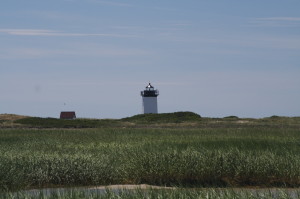
Part of the appeal is the quiet and the sense of open space. Another part has to be the color palette and the texture of the scenery. The marsh grass, the water, the sky, the rocks, even the human textures of harbor towns like this speak to me. I don't particularly care for how artsy and contrived that sounds, but I'm at a loss for better words.
[gallery ids="1144,1143,1142,1141,1139"]
